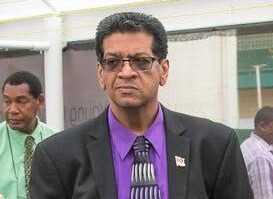Preserving history: Measured approach to removing symbols

THE EDITOR: The debate surrounding the removal of colonial symbols and statues from public spaces is both complex and deeply contentious.
While many believe these symbols represent a painful history of oppression, slavery and colonial dominance, others argue that their removal may have far-reaching negative consequences for the social and cultural fabric of TT. I fall within the latter group, advocating for a more measured approach to addressing these issues.
Before delving into the substantive matter, I wish to briefly address Prime Minister Rowley’s proposal to single-handedly alter the country’s coat of arms.
My personal view is that no changes to national signs, symbols or emblems should be made without the expressed will of the people. While referendums are not enshrined in our Constitution, the British Parliament offers mechanisms for critical and urgent matters of national interest to be debated.
Unfortunately, no such mechanism exists in TT. As a result, the country risks falling into a form of Westminster dictatorship, a trend that has been growing increasingly concerning.
To segue, I recall a conversation I had with historian Michael Anthony, who corrected a historical inaccuracy. The famed "Trinity Hills" were not actually located in Guayaguayare. When Columbus approached from the East, he observed three ranges: the Northern, Central and Southern ranges. Hence, the name "La Trinity," which was later associated with Trinidad. Given this inaccuracy, should we then consider renaming our country?
Returning to the matter at hand, one of the most significant risks associated with the removal of colonial symbols is the potential for what is termed "historical amnesia." These emblems serve as physical reminders of our nation's colonial past, a period that, while painful, has undeniably shaped our present society.
Erasing these symbols could result in the sanitisation of history, leading future generations to forget the struggles that led to the freedoms we enjoy today.
When history is forgotten, so too are its lessons, exposing us to the risk of repeating the mistakes of the past. As George Santayana wisely remarked, "Those who cannot remember the past are condemned to repeat it."
The colonial era was not solely defined by oppression; it was also a period of resistance and resilience among the colonised. Removing statues and emblems reduces the opportunity for reflection and education about this complex history.
By retaining these symbols in public spaces, we can keep the conversation alive about the impact of colonialism, particularly educating younger generations on the importance of acknowledging and understanding our past.
The focus on removing symbols may also divert attention from more pressing issues facing our nation. Removing statues and colonial emblems, while symbolic, does not address the socio-economic disparities that persist today as a legacy of colonialism.
If we genuinely seek to dismantle the remnants of colonial oppression, we should focus on actions that uplift communities, create opportunities, and promote social and economic justice.
Another potential consequence of the removal of colonial symbols is the risk of cultural erasure. History, no matter how painful, is part of our national narrative. We must condemn past atrocities while recognising that they form part of our identity today. Removing these symbols may sanitise history and erase the contributions of both colonisers and colonised to our national story.
Rather than removing these symbols, we can adopt alternative approaches that promote a more nuanced understanding of history. For example, we can recontextualise statues and monuments with plaques that explain their historical significance, including the negative aspects of colonial rule. This method acknowledges the pain caused by colonialism while honouring the resilience of those who fought for freedom and justice.
The removal of colonial symbols could also deepen societal divisions. While some view these statues as relics of oppression, others see them as part of our shared history and heritage. Erasing these symbols may alienate those who feel their history is being invalidated. In our multicultural society, where diverse groups coexist, it is essential to foster inclusivity and understanding, not further division.
As a Member of Parliament with a strong business background, I have often found opportunities in difficult situations. While I won’t delve into those today, I believe there is always a chance for growth and improvement, even in this debate.
In conclusion, while calls for the removal of colonial symbols from public spaces are understandable, such actions may have unintended negative consequences.
The risks of historical amnesia, diversion from pressing socio-economic issues, cultural erasure, and deepened societal divisions should be carefully considered. Instead of erasing our history, we should confront it openly, using these symbols as tools for education, reflection and reconciliation.
Through this approach, we can ensure that the lessons of the past remain relevant as we strive to build a more just and equitable future.
RUSHTON PARAY
Mayaro MP

Comments
"Preserving history: Measured approach to removing symbols"